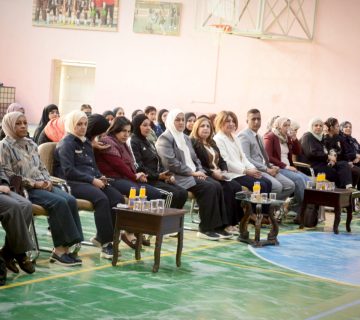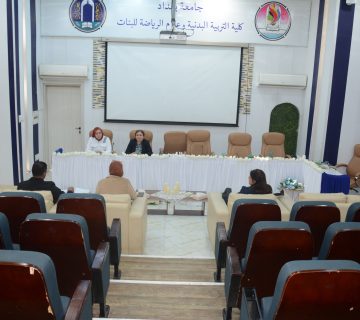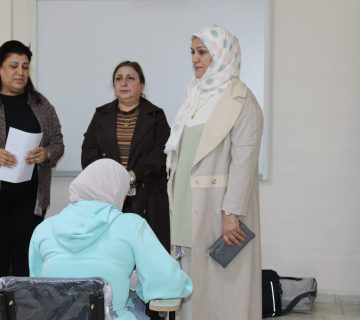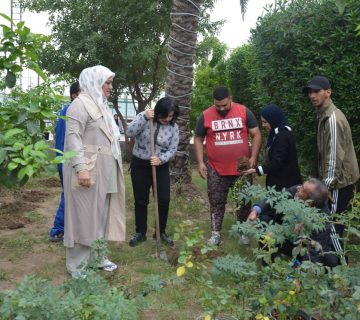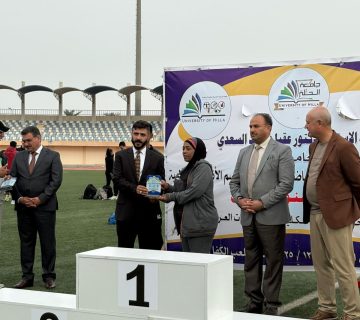The Continuing Education Unit at the College of Physical Education and Sports Sciences for Girls, University of Baghdad, organised a training course titled (Using English for Publishing in Indexed Journals – Steps and Terminologies) The course was presented by English language instructors from the Theoretical Sciences Department: Asst. Lect. Noor Riyadh, Asst. Lect. Inaam Ghalib and Asst. Lect. Nibal Ahmed.
The course focused on ten key aspects that serve as essential guidelines for researchers navigating academic publishing in English, particularly for non-native speakers:
-
The importance of publishing in indexed journals as a fundamental step in enhancing a researcher’s academic standing and increasing the impact of their work on the scientific community.
-
Indexed journals are those listed in globally recognised academic databases such as Scopus, Web of Science, PubMed, and IEEE Xplore.
-
Publishing in indexed journals has benefits, including increased academic impact, higher citation rates, global recognition, scientific credibility, improved career advancement opportunities, and better access to research funding.
-
Key factors for selecting the right journal include field of study, type of publication, acceptance rate, and journal submission guidelines.
-
Types of journals and their classifications, including high-impact indexed journals, peer-reviewed journals, and open-access or subscription-based journals. The session also covered “predatory journals” and how to distinguish them from reputable ones.
-
Guidelines for preparing research for publication, ensuring that manuscripts meet the necessary academic and linguistic standards.
-
Common challenges researchers face during the peer-review process and how to effectively respond to reviewer feedback.
-
Proper citation and referencing techniques help researchers adhere to academic integrity and enhance the credibility of their work.
-
Research tools and platforms that facilitate literature searches in indexed journals.
-
Tailoring research manuscripts to meet journal requirements, emphasising the importance of aligning submissions with the target journal’s expectations.
This course was conducted in alignment with Sustainable Development Goal 4 (Quality Education), serving as a valuable step toward enhancing researchers’ academic skills and encouraging their active participation in the global scientific community.
The Continuing Education Unit at the College of Physical Education and Sports Sciences for Girls, University of Baghdad, organised a training course titled (Using English for Publishing in Indexed Journals – Steps and Terminologies) The course was presented by English language instructors from the Theoretical Sciences Department: Asst. Lect. Noor Riyadh, Asst. Lect. Inaam Ghalib and Asst. Lect. Nibal Ahmed.
The course focused on ten key aspects that serve as essential guidelines for researchers navigating academic publishing in English, particularly for non-native speakers:
-
The importance of publishing in indexed journals as a fundamental step in enhancing a researcher’s academic standing and increasing the impact of their work on the scientific community.
-
Indexed journals are those listed in globally recognised academic databases such as Scopus, Web of Science, PubMed, and IEEE Xplore.
-
Publishing in indexed journals has benefits, including increased academic impact, higher citation rates, global recognition, scientific credibility, improved career advancement opportunities, and better access to research funding.
-
Key factors for selecting the right journal include field of study, type of publication, acceptance rate, and journal submission guidelines.
-
Types of journals and their classifications, including high-impact indexed journals, peer-reviewed journals, and open-access or subscription-based journals. The session also covered “predatory journals” and how to distinguish them from reputable ones.
-
Guidelines for preparing research for publication, ensuring that manuscripts meet the necessary academic and linguistic standards.
-
Common challenges researchers face during the peer-review process and how to effectively respond to reviewer feedback.
-
Proper citation and referencing techniques help researchers adhere to academic integrity and enhance the credibility of their work.
-
Research tools and platforms that facilitate literature searches in indexed journals.
-
Tailoring research manuscripts to meet journal requirements, emphasising the importance of aligning submissions with the target journal’s expectations.




